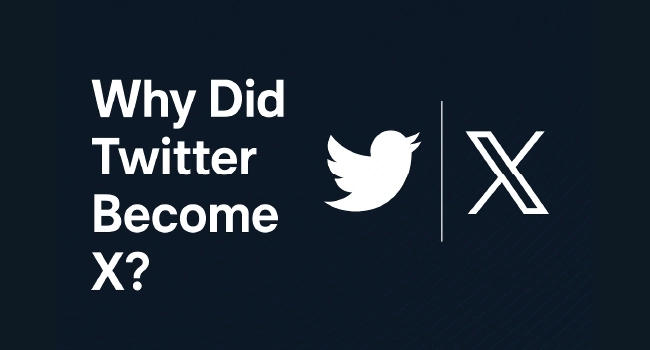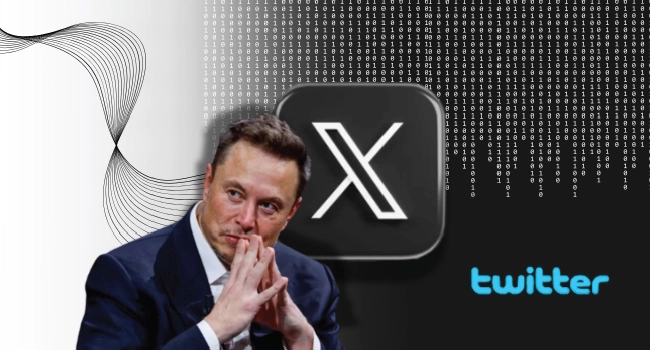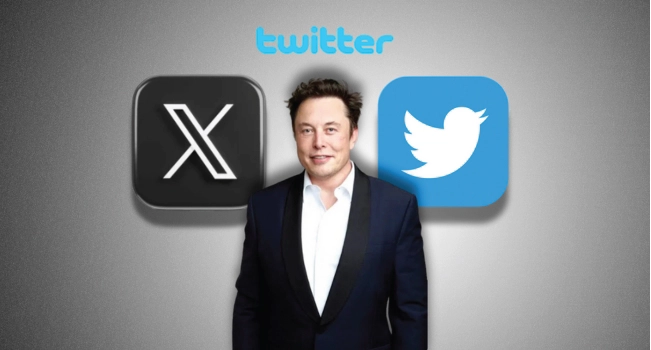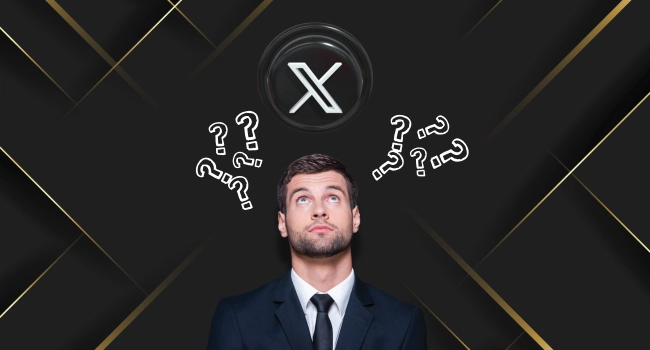
Why did Twitter become X? That’s the question that surprised millions when Elon Musk swapped the iconic blue bird for a single bold letter. Overnight, one of the most recognizable social platforms in the world changed its identity. For many, it felt like the end of an era.
In this article, we’ll walk you through how Twitter started, why Musk pushed for such a dramatic rebrand, and what it means for you today. We’ll explore the timeline of changes, the strategy behind the shift, and the legal and SEO implications that most people overlook.
A Quick Look Back at Twitter’s Origins
Twitter launched in 2006 when Jack Dorsey posted the first message: “just setting up my twttr.” The platform quickly stood out because it limited posts to 140 characters, forcing short, snappy communication. In 2017, the limit doubled to 280 characters, but the focus on brevity remained.
Some key milestones shaped Twitter’s role in global culture:
-
2007: Hashtags were introduced, making it easier to follow conversations.
-
2010–2011: Twitter became a tool for breaking news during events like the Arab Spring.
-
2013: Twitter went public, valued at $24 billion on its first trading day.
-
2014–2020: The platform became central to politics, live sports, and entertainment conversations.
Despite its influence, Twitter faced serious challenges:
-
Slowing user growth compared to Facebook, Instagram, and TikTok.
-
Difficulty turning engagement into consistent advertising revenue.
-
Ongoing controversies around moderation, misinformation, and bot accounts.
By the time Elon Musk entered the picture in 2022, Twitter had cultural power but lacked strong financial momentum. That mix of influence and instability set the stage for its most radical transformation yet.
Timeline of the Twitter to X Rebrand

The rebrand from Twitter to X didn’t happen overnight. It unfolded in a series of bold moves, each one pushing the platform closer to Elon Musk’s vision of an “everything app.” By looking at the timeline, you can see how the idea evolved from a passing comment to a complete corporate transformation that changed one of the world’s most recognizable brands.
2022 – Musk's First Mentions of "X"
When Elon Musk bought Twitter in October 2022, he called the platform an "accelerant to creating X, the everything app."
This wasn't new for him, he had been using the "X" brand since his 1999 startup X.com, which later merged into PayPal. From the beginning, it was clear Musk didn't just want to own Twitter. He wanted to fold it into his bigger vision.
2023 – Twitter Becomes X Corp.
In April 2023, court filings revealed that Twitter, Inc. no longer existed. It had merged into X Corp., a new legal entity based in Nevada. This move showed that Musk was serious about reshaping the company's foundation before touching the brand we all recognized.
July 2023 – The Public Rebrand
On July 23, 2023, Twitter officially became X. The bird logo disappeared, replaced by a black-and-white "X."
A massive illuminated X was even placed on top of Twitter's San Francisco headquarters, though city officials forced its removal days later due to complaints. For users, this was the first undeniable sign that Twitter's identity was gone.
August 2023 – App Store Rollout
The switch to a one-letter name wasn't smooth. Both Apple and Google initially resisted changing "Twitter" to just X in their app stores, because most platforms don't allow single-character names. After adjustments, Apple granted an exception, and the app officially listed as "X."
2024 – Twitter.com Becomes X.com
On May 17, 2024, the domain x.com replaced twitter.com as the main site. All old Twitter links still worked, but they redirected to the new domain. For businesses and SEO teams, this was a big deal, every embedded link, every card, and every mention now had to align with X.com.
Product & UX Changes Along the Way
During this period, X experimented with product changes that hinted at its future direction:
-
Removing and later restoring headlines in link cards.
-
Expanding long-form posts and video content.
-
Introducing new monetization features like paid subscriptions.
-
Adjusting how posts appear in feeds, echoing the kind of shifts seen in the Twitter algorithm.
Why Did Twitter Become X? Musk’s Strategy Explained

The rebrand left many asking the obvious: why take such a famous name and replace it with a single letter? To understand the answer, we need to look at Elon Musk’s bigger vision and how it connects to his long history with the X brand.
The "Everything App" Vision
Musk has often said he wants to create a Western version of WeChat, the Chinese super-app. WeChat combines messaging, shopping, payments, and social media into one platform.
Musk's idea is similar: he sees X as a hub where you can post, chat, pay, and shop without leaving the app. This move is ambitious, but it explains why the Twitter identity, tied mainly to short posts, no longer fit the plan.
Musk's Long Relationship With "X"
"X" isn't just a random choice. Musk has used the letter in multiple projects:
-
X.com in 1999, his online banking startup that later merged into PayPal.
-
SpaceX, his space exploration company.
-
xAI, his artificial intelligence venture.
By renaming Twitter to X, Musk aligned it with the rest of his personal brand ecosystem.
Resetting Twitter's Reputation
By 2022, Twitter was struggling with growth, revenue, and public trust. Many saw it as a place for negativity and endless political fights.
Musk wanted a fresh start. Dropping the Twitter name gave him a chance to wipe away old baggage and position X as something more forward-looking.
Expanding Beyond Tweets
For years, Twitter was known only as a place to "tweet." Musk wanted to break that limitation. He pushed for long-form articles, video uploads, and direct monetization tools for creators. By shifting away from short updates, X could compete with platforms like YouTube, TikTok, and even Substack.
Metrics like tweet impressions started gaining attention, especially as creators compared reach on text posts versus long-form or video content.
Building Toward Financial Services
One of Musk's boldest goals is to make X a financial platform. The company has been applying for money transmitter licenses in multiple U.S. states.
Musk envisions peer-to-peer payments, tipping, and even banking services inside the app. If successful, this would turn X into a part of your daily financial life.
Legal and Trademark Challenges Around “X”
Rebranding Twitter into X created more than design and product changes. It also opened a complicated legal puzzle, because the letter “X” is one of the most heavily trademarked symbols in the world.
Trademark Overlap
Dozens of companies already own trademarks for the letter "X" across different industries. Microsoft has trademarks tied to Xbox, while Meta has filings for social and digital services. This overlap makes defending the brand a challenge and raises the risk of disputes.
Early Concerns
Legal experts quickly pointed out that using such a common mark could spark lawsuits or force X to narrow how it applies the brand. Some analysts even called it one of the riskiest rebranding moves in tech history.

Why It Matters for Businesses
For companies using the platform, these challenges mean brand stability isn’t guaranteed. If disputes intensify, it could affect how X is marketed or even how the app appears in app stores. While this is unlikely to erase the platform, it highlights how bold branding choices can create long-term legal headaches.
SEO & Technical Implications of the Rebrand
The shift from Twitter to X also created important technical and SEO challenges that businesses, publishers, and creators needed to handle.
Discoverability Challenges
Searching for a single letter like X is difficult. It overlaps with unrelated results, from the Xbox console to mathematical terms. To solve this, most media outlets and marketers use "X (formerly Twitter)" in their titles and descriptions. This helps search engines connect the new name with the old identity, making content easier to find.
Meta Tags Still Say "Twitter"
Even after the rebrand, X's developer tools kept the old Twitter Card tags. For example, you still use twitter:title and twitter:card for link previews. There's no replacement like x:card, so if you run a website, you don't need to change your existing setup.
Redirects to X.com
In May 2024, the official domain moved to x.com, and all twitter.com links began redirecting automatically. This protected link equity and SEO value, but marketers still had work to do. Updating embedded links, checking analytics tags, and verifying social previews became part of the migration process.
Best Practices for Marketers and Publishers
If you manage a brand or website, here are quick steps to stay aligned with the rebrand:
-
1. Use "X (formerly Twitter)" in meta titles and headings until search engines fully adapt.
-
2. Keep Twitter Card tags in place, no updates required.
-
3. Check all your site's old twitter.com links to confirm they redirect correctly.
-
4. Update UTM parameters and analytics dashboards to track "X" as a new traffic source.
These small adjustments help you stay visible, protect your SEO rankings, and avoid confusion as the platform continues to evolve.
Conclusion
Now you understand the full story of why did Twitter become X. What started as a simple microblogging site grew into a global platform and is now being reshaped into something entirely new.
As the platform changes, one thing remains the same: engagement drives reach. If your posts gain traction early, they travel further and get noticed by more people. To give yourself that boost, you can use our buy Twitter retweets service as a simple way to spark early momentum. With more retweets supporting your content, you’ll have a better chance to grow your presence and join the bigger conversations happening on X.
FAQs | Frequently Asked Questions |
Why did Elon Musk choose the letter X for the rebrand?
Musk has a long history with the letter X, from his 1999 startup X.com to SpaceX and xAI. Using X ties the platform to his wider vision and branding.
Is X planning to replace other platforms like YouTube or TikTok?
X has already pushed video and creator monetization tools, signaling competition with YouTube and TikTok. The goal is to keep creators and their audiences inside the app.
Will X bring back features that were removed during the transition?
Certain features, like headline previews on link cards, were temporarily removed and then reinstated after feedback. This shows that X is willing to test aggressively but still respond to user demand.
How does the rebrand affect everyday users?
For most people, the core experience hasn’t changed. You can still post, share, and follow accounts as before, though the interface, branding, and new features signal bigger shifts ahead.
